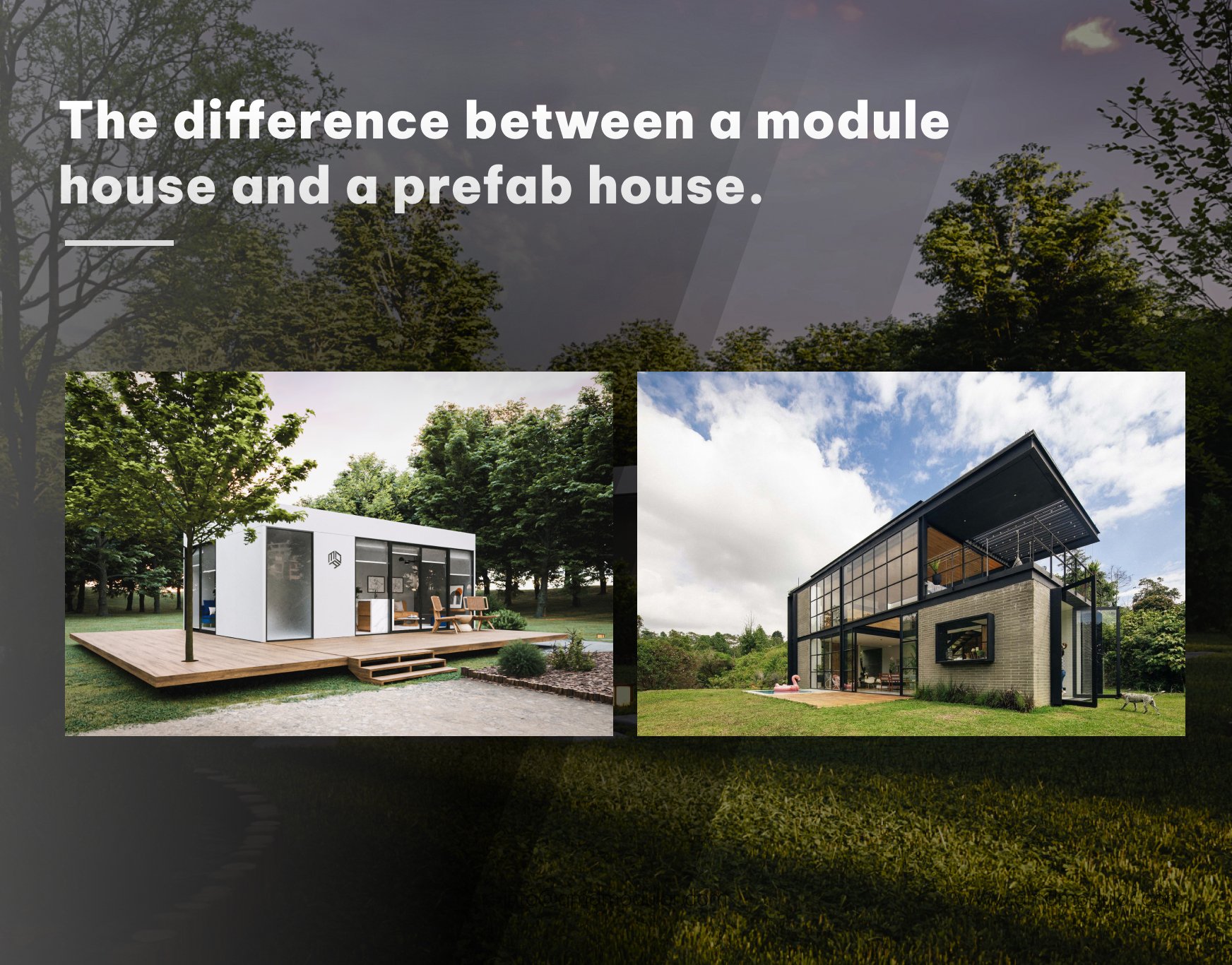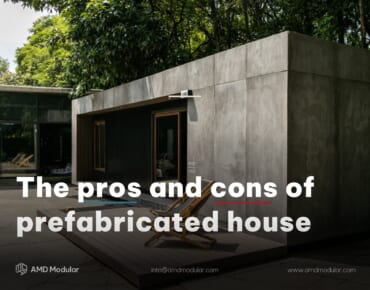All modular houses are prefabricated, but not all prefabs are modular!
The word prefab alludes to construction, which suggests building a house in a production line sometime recently it’s amassed at a development site. Modular homes, more precisely called pre-assembled prefinished volumetric development, are houses that are at the slightest 70% prefabricated.
That’s the brief reply, but let’s break down the contrasts between prefab and measured homes in more detail.
Prefab vs. Module Houses: What’s the Difference?
The primary distinction is that module homes are built offsite, while prefab homes are assembled onsite. This implies that module houses can be delivered faster than measured homes since they don’t require as much labor or time to assemble. Additionally, module houses are generally of higher quality since it is mass-produced in the factory with strict standards.
Modular homes are typically more expensive than stick-built homes because they have to be manufactured at a factory. They also tend to take longer to build than stick-built homes. In return, it usually has a high aesthetic and is popular with high-class customers.
Modular may be a more particular term than prefab. As the title proposes, module houses are made up of pre-assembled pieces or ‘modules’ that go together like building blocks. Each module houses one or more rooms that are built nearly completely in a production line. Now and then, indeed the wiring and plumbing are pre-installed. That’s how we do it at AMD Modular!
If you want to learn more about modular construction, check out this video by AMD Modular.
The modules are at that point transported by flatbed trucks to the homeowner’s empty part and collected as a unit on the best of an establishment (which has as of now been poured). It’s a bit like collecting LEGO squares, where each piece speaks to a partitioned module. Since they need to be moved by truck, these modules are by and large less than 16 feet wide. This utilized to cruel each room within the house had to be less than 16 feet wide but much appreciated to unused advances, the conceivable outcomes are for all intents and purposes boundless!
History of Module House
In the early 20th century, architects such as Le Corbusier and Walter Gropius began advocating the use of mass production techniques to reduce costs and increase efficiency in architecture. They believed that this would lead to more economical housing for the masses.
In the 1950s, the development of lightweight structural systems like aluminum allowed for the construction of large structures without requiring heavy foundations. This led to the first attempts at prefabrication in the United States.
In the 1960s, the introduction of steel framing enabled the creation of larger buildings than had been possible before. These developments led to the concept of “modular” construction.
In the 1970s, the development of computerized numerical control (CNC) machines made it possible to produce complex metal shapes automatically. This led to the development of the first true prefabricated homes.
The 1980s saw the rise of the “green movement,” which emphasized environmental responsibility. This led to the adoption of environmentally friendly building practices, including energy-efficient designs and the use of recycled materials.
Today’s modular homes have become increasingly sophisticated, incorporating many of these technologies.
Redefining affordable luxury to create a new standard of living
Module houses offers several advantages over conventional construction:
- Less labor is required because modular homes can be built from factory-produced components, they require far less labor than traditional methods.
- It allows for greater customization since you can customize them to your exact specifications.
- It increases quality control because manufacturing homes in factories also ensures that they meet higher quality standards than those produced by hand.
- It provides a faster return on investment by using premanufactured parts, you save money because you don’t have to pay for the cost of raw materials. Also, you won’t have to wait as long before you start receiving income from your home.
- Manufacturing homes in factories also means that you’ll spend less money buying materials. Because you’re paying for the finished product, you won’t have any additional expenses related to purchasing lumber, bricks, cement, sand, gravel, steel, glass, etc.
- It decreases the amount of dirt generated during construction. When you use modular homes, there’s no need to throw away leftover materials. Instead, you can reuse these materials when constructing another home.
- It allows for greater flexibility. You can easily modify the design of modular homes to suit your needs. If you decide to change something later on, you can simply replace the old part with
With all such outstanding advantages, it is not difficult for the modular house to become the new symbol of living standards.
>>>> Learn more about AMD Modular technology
How do I get started with module house?
The first step in this process should be to find out how much land you need. This will determine the size of your home, the number of modules you’ll need, and whether you’ll be using a kit-style home (where everything comes in pieces) or a complete ready-to-build home.
If you decide on a kit-style home then you’ll also have to decide which type of kit you want: A basic kit that includes all the materials you need for your home; an advanced kit that provides more options and features than a basic kit but is still easy to build; or a luxury kit that offers even more options and features.
Once you know what kind of kit you want, you can start looking at different manufacturers. One of the most popular choices among builders in Vietnam is AMD Modular. We provide a variety of kits, ranging from basic to luxury, as well as a full line of accessories. We also make custom designed and built to meet your specific needs.
AMD Modular is a leading manufacturer of modular homes in Vietnam. With over 10 years of experience, we offer a range of modular designs, including luxury villas, townhouses, apartments, and studio flats. Our modular homes are constructed with the highest quality standards and come fully equipped with appliances, fixtures, fittings, and furniture.
We are located in Hanoi, Vietnam and we ship directly to our clients worldwide. If you would like to learn more, do not hesitate to contact us.










